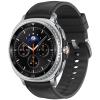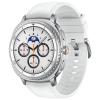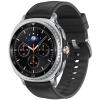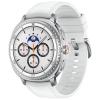The Galaxy Watch8 Classic is Samsung’s latest premium smartwatch, blending a traditional design with the smart features you’d expect from a modern wearable.
It’s aimed at people who want a stylish, stainless steel watch that still packs in all the fitness tracking, health monitoring, and connectivity you need day to day.
With its rotating bezel, bright AMOLED display, and 64GB of storage, it ticks a lot of boxes on paper. But while it delivers in many areas, there are a few limitations you’ll want to consider before strapping one to your wrist.
| PROS | CONS |
|---|---|
|
|
Price/Competition
The Galaxy Watch 8 Classic (46 mm Bluetooth) is priced at $849, while the LTE model comes in at $949.
At this price, it’s competing with the Garmin Venu 3, which costs $899, and the OPPO Watch X2 at $649.
The Classic’s strengths are its premium stainless steel build, the rotating bezel for navigation, and larger 64GB storage capacity compared to many rivals.
The OPPO Watch X2 undercuts it by about $200 while offering a similar Wear OS experience, but it doesn’t have the same level of physical controls or Samsung’s health platform. The Garmin Venu 3 wins on battery life but is more fitness-oriented, and the Apple Watch Series 10 is the option you should choose if you have an iPhone.
With that said, for Android users who want a balance of style, performance, and smart features, the Classic is a brilliant smartwatch that gets almost everything right.
Design
This is a big 46mm smartwatch that does look bold on the wrist, if you have slim wrists, you might find it too large, but it is very comfortable to wear.
It boasts a circular display, with the very handy rotating bezel sitting nicely on top. The first thing you’ll notice though, is that the surrounding case is now a “squircle” shape, which I think will prove divisive. You’ll either love it or think it looks a bit weird.
At around 10.6mm thick, it is on the chunkier side. The stainless steel build feels solid, and the rotating bezel is still one of the most satisfying ways to navigate a smartwatch. It’s precise, responsive and incredibly easy to use. It’s one of the watch’s best features and is a good enough reason to opt for the “Classic” version. Of course, you can always use the touchscreen for navigation, but using the bezel means you don’t have to smear fingerprints all over the screen, and it’s brilliant for scrolling through apps like Spotify and Samsung Health.
There are of course other controls as well, and they’re well implemented here. On the right side, you’ll find the home/power button at the top, a back button below it, and in between, Samsung’s new Quick Button. This can be customised to launch a specific app or feature, such as the exercises app, stopwatch, torch, water lock, or camera controller. I set mine to open the exercises app, where a short press launches it immediately. During a workout, a double press records a split, a long press stops the session, and a single press pauses it. The buttons are tactile, well-spaced, and easy to locate without looking, while also being resistant to accidental presses. It’s a genuinely useful addition.
The watch is IP68-rated and water-resistant up to 50m, so it can handle rain, swimming, and the gym without any issues. It’s also dust-tight and MIL-STD-810H compliant, so you won’t have any issues with durability.
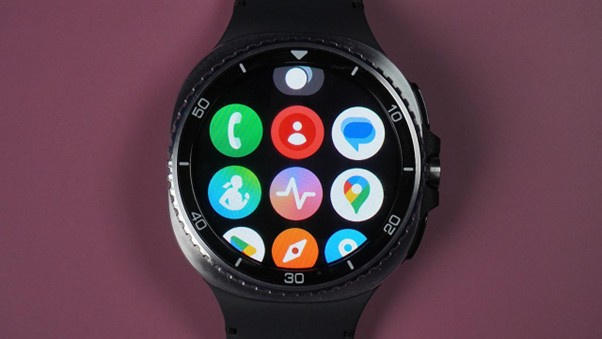
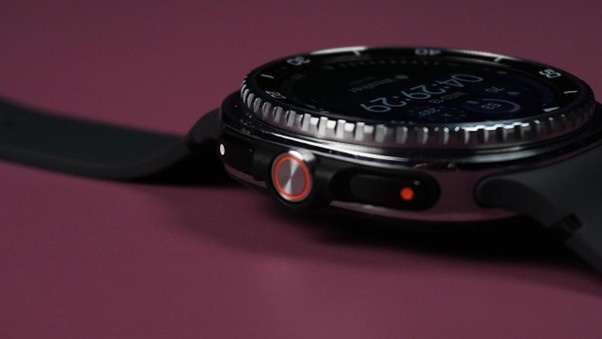
Display
The 1.34-inch Super AMOLED, 438 x 438, panel is excellent. It’s sharp, vibrant, and very bright, with a peak brightness of 3,000 nits, making it easy to read even in harsh sunlight.
Colours are rich, blacks are deep, and animations are smooth thanks to the 60Hz refresh rate. The bezels are nice and slim, providing a good balance between screen space and the functionality of the rotating bezel.
Samsung has used sapphire crystal to protect the display, which adds a layer of protection against scratches. The always-on display mode keeps the watch face visible at all times, and it remains clear and easy to read even when dimmed.
Touch controls are responsive, fast and accurate, so swipes and taps feel natural and effortless, whether you’re navigating menus or interacting with apps.
Performance
The Watch8 Classic utilises the Exynos W1000 chipset with 2GB of RAM and 64GB of storage, double the space of the standard Watch8. Apps open quickly, scrolling is smooth, and switching between tiles is completely lag-free.
It’s powered by Wear OS 6 with Samsung’s One UI 8 interface, meaning you get Google Play apps alongside Samsung’s health platform. And everything you need is here. Spotify, Google Maps, and you can even control your phone camera with your watch, which is great for group photos that you actually want to be in.
While it will work with a variety of Android phones, you'll miss out on some key features if you don't have a Samsung Galaxy device. The biggest exclusions are the advanced health monitoring tools, such as the ECG and blood pressure monitoring, which are tied to the exclusive Samsung Health Monitor app.
You also won't have full integration with Samsung's ecosystem, meaning features like seamless syncing with Samsung Modes and Routines and using Samsung Pay/Wallet are limited. Basically, you'll get core smartwatch functions on any Android device, but the most advanced health tools and the deepest software integration are reserved for those with a Samsung phone.
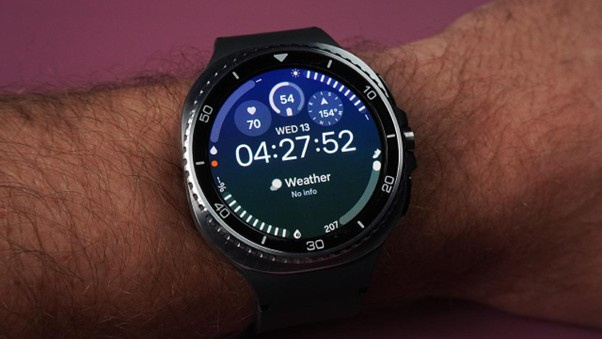
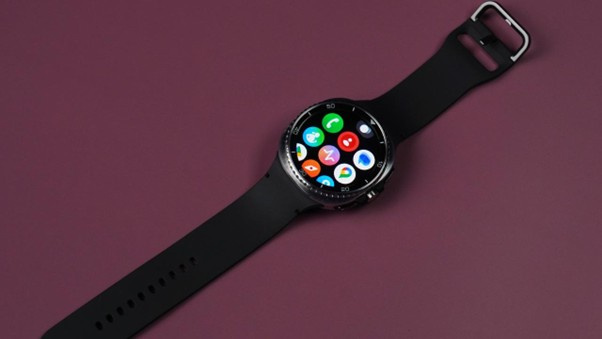
Battery
The Galaxy Watch8 Classic has a 445mAh battery that Samsung claims will provide up to 40 hours with the always-on display on, and up to 50 hours with lighter use. In reality, you’re looking at roughly a day and a half to two days between charges, depending on how much GPS, health tracking, and high screen brightness you use.
A full charge takes just over an hour, and a 15-minute top-up can usually get you through the rest of a workday.
The issue is that this isn’t a huge improvement on other smartwatches. It means you have to charge the watch overnight, which makes features like sleep tracking a bit useless. Unless you’re willing to find charging windows during the day, you’ll likely miss out on consistent overnight tracking, which is disappointing.
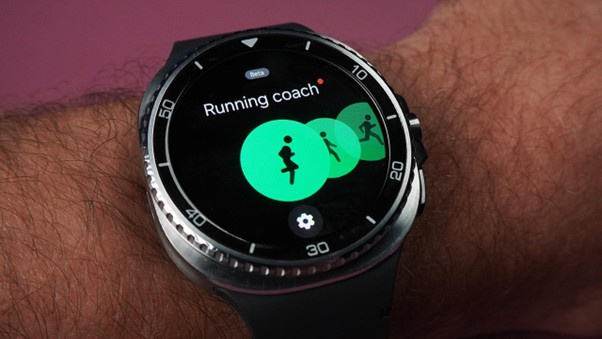
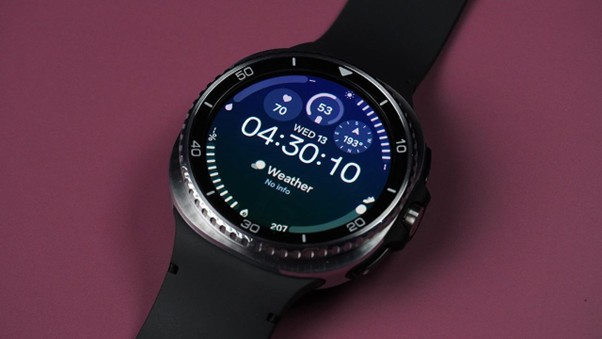
Health & Fitness Tracking
All the familiar Galaxy Watch health tools are here: heart rate, ECG, blood oxygen, body composition, sleep tracking, and automatic workout detection, and they work just as reliably as before. GPS accuracy has seemingly improved, locking in faster and tracking routes more accurately, especially in busy urban areas.
Workout tracking covers just about everything, from common activities like running, cycling, swimming and gym exercises. There aren’t many specialised niche sports trackers though, like Tennis, Skiing and so on, something the OPPO Watch X2 does accommodate. Automatic detection usually kicks in within a few minutes, which is great if you forget to start a session, and it was able to quickly tell when I was on a treadmill, which is always a good sign.
For runners, the AI Running Coach, which is currently in beta, is a notable upgrade. It doesn’t just hand you a basic plan; it adapts based on your recent performance, so if you’ve pushed hard in a previous session, it’ll dial things back, and vice versa.
The new Energy Score is genuinely useful for deciding how hard to train, while Bedtime Guidance can help keep recovery on track. Other metrics like the Antioxidant Index and Vascular Load sound impressive, but don’t yet have clear, actionable advice attached.
Unfortunately, battery life does have an impact here. If you want to log long workouts and still track your sleep, you’ll need to plan charging around your day. Wearing it overnight isn’t always possible if you’ve drained it during exercise.
Verdict
The Galaxy Watch8 Classic nails the fundamentals. It looks and feels premium, the display is excellent in all conditions, and the rotating bezel remains one of the most practical navigation tools you’ll find on any smartwatch.
Performance is smooth, GPS is reliable, and there’s enough health and fitness tracking here to keep both casual and committed users happy. That said, battery life is still its biggest weakness, and it’s a real drawback if you’re serious about sleep tracking.
Pair it with a Samsung phone and you’ll unlock the most advanced features, but even without that, it’s still one of the most well-rounded Android-compatible smartwatches you can buy. Just be ready to top it up more often than you’d like.


